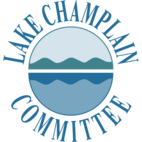Marshes
November 2008
Some of my fondest memories of Lake Champlain have been earned while sitting in a kayak upon one of the lake’s many marshes. In the spring, the tidik tidik tidik of Virginia rails filters from the vegetation in the pre-dawn hours. As the sun rises, swarms of tree swallows emerge from the cattails, and a bald eagles might glide over head before alighting in lake side pine trees to sit and observe its realm. In autumn, dozens of ducks and hundreds of chattering blackbirds alight at dusk when the fiery glow of the setting sun dances red and orange across the placid water.
Marshes are wetland habitats dominated by herbs or grasses. If the wetland is dominated by shrubs or trees it would more appropriately be called a swamp. There are actually many different types of marshes around Lake Champlain. Ecologists Elizabeth Thompsons and Eric Sorenson describe the variants in their book Wetland, Woodland, Wildland. Delineation of the different types is based on water depth and dominant plant types. Within complex wetland settings, the different types may blend together like a patchwork quilt.
I usually find myself frequenting cattail marshes. Cattails are very tolerant of changes in water levels and can occupy a broad area, up to 500 acres, in still areas. Thick dense stands of cattails spread from rhizomes, creeping roots from which new shoots arise. These communities offer low plant diversity but a wealth of animal habitat. Marsh wrens rattle from among the stems. Moorhens cackle from hidden pools, and muskrats glide about the water harvesting stems for shelter and food.
In deeper water, cattail marshes often blend into deep broadleaf marshes. These communities can be dominated by pickerelweed, arrowhead, or giant burr-reed. A patchy mix of the different species may occur, each popping up from its own underwater stems. Broadleaf marshes also provide an abundance of food for wildlife.
Sometimes, large stands of wild rice will form a distinct wetland type mixed with the deep broadleaf marshes. Wild rice is a tall slender grass that can grow to ten feet in height. The mature grains of the plant, borne at the top of the plant on tapering series of thin branches, are edible for both wildlife and humans. As a result, wild rice has been planted in many areas to improve duck habitat. The extent of wild rice marshes can vary year to year depending on the success of seed germination.
Moving out to the open water of the broad lake one can encounter deep bulrush marshes. These tall somewhat stout members of the sedge family have a branched cluster of flowers and seeds flopped to one side at the top of the plant. From a distance bulrush marshes may appear to be an impenetrable forest of grass, but closer up one notices that it is possible to take a canoe through the spaced, yielding stems. No marsh communities develop in water deeper than the bulrush marshes.
On the landward side the gradation from cattail marsh to upland can be gradual, transitioning through shallow emergent marshes. These communities would be passable in a kayak only during the wettest periods of the year, but water depths rarely exceed two feet, and during the summer there may be no standing water. Vigorous grasses, sedges, and herbs dominate shallow emergent marshes, often growing from hummocks that jut just above the water surface.
At one time much of the Champlain Valley would have been marsh habitat. After the glaciers and the waters that covered the area receded, wetland plants would have colonized first. Only over time did these habitats fill in and become uplands. More recently, marshes have been drained or channelized to make room for development.
The mouths of the lake’s rivers offer the best opportunity to explore the mix of different marsh types. Extensive marsh habitat can be found around the Ausable River, Missisquoi River, Lamoille River, and Little Otter Creek. In addition, marshes are extensive in quiet bays and along both the shoreline of the South Lake. Bring a boat, some binoculars, and a sense of adventure.
Lake Look is a monthly natural history column produced by the Lake Champlain Committee (LCC). Formed in 1963, LCC is the only bi-state organization solely dedicated to protecting Lake Champlain’s health and accessibility. LCC uses science-based advocacy, education, and collaborative action to protect and restore water quality, safeguard natural habitats, foster stewardship, and ensure recreational access.
Get involved by joining LCC using our website secure form (at www.lakechamplaincommittee.org), or mail your contribution (Lake Champlain Committee, 208 Flynn Avenue - BLDG 3 - STUDIO 3-F, Burlington, VT 05401), or contact us at (802) 658-1414, or lcc@lakechamplaincommittee.org for more information.
